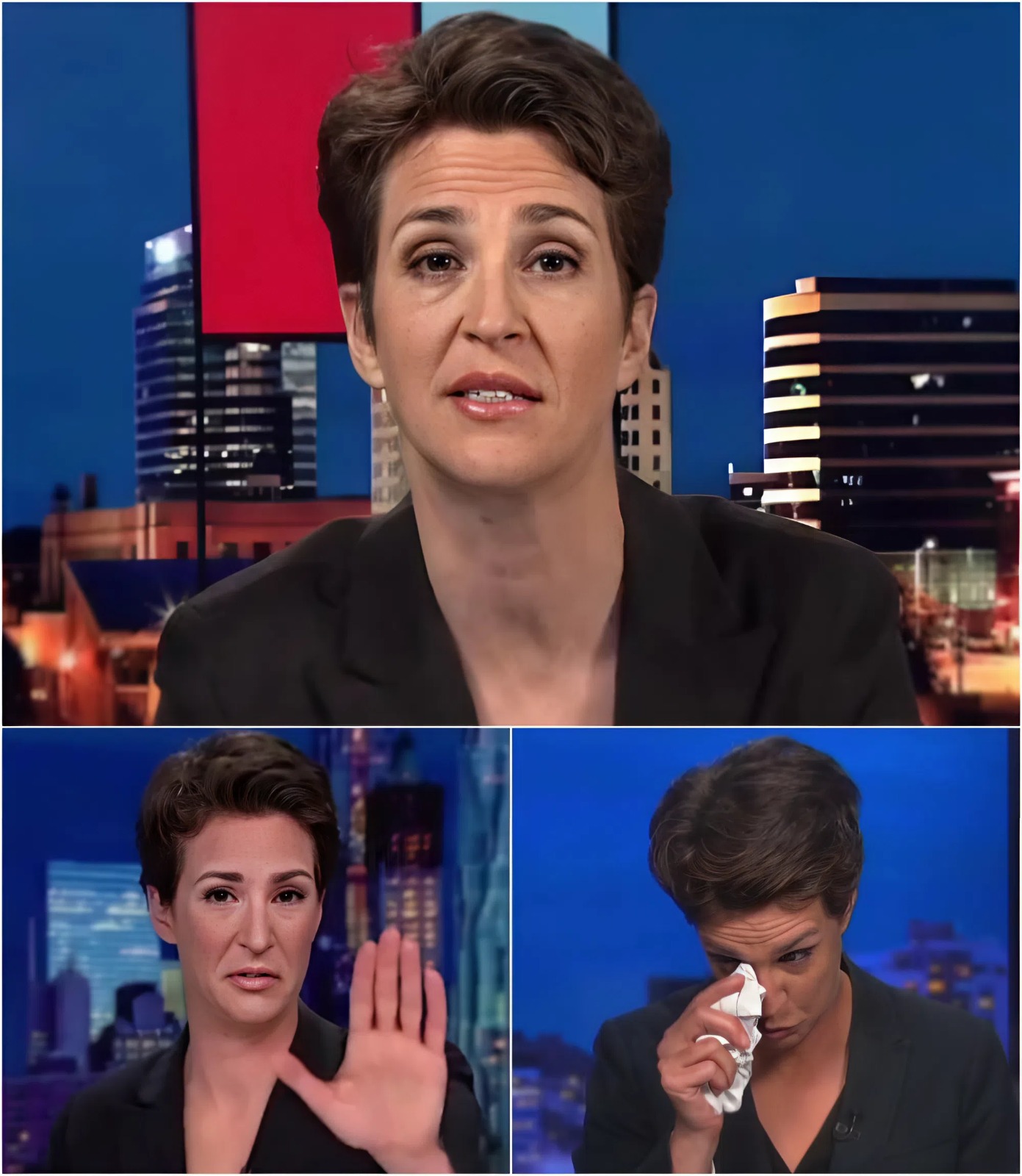
It wasn’t just a news segment.
It was a rupture.
On June 19, 2018, in the middle of a broadcast that began like any other, Rachel Maddow—cool, composed, clinically sharp—broke. Not with outrage. Not with opinion.
With silence.
She couldn’t finish the story. And that, more than anything she’s ever said, was the story.
🎥 The Moment That Shattered the Set
The words were in front of her.
“Trump administration officials have been sending babies and other young children…”
But as the reality behind those words hit her—babies separated from their families, toddlers in government custody, alone and afraid—Maddow couldn’t read another syllable.
Her voice cracked. Her hands trembled. And then came the line that would be replayed millions of times across the country:
“I think I’m going to have to hand this off… I’m sorry.”
She passed the show to Lawrence O’Donnell and looked away from the camera. No script, no spin. Just real human pain—broadcast live to millions.
💔 A Story Too Cruel to Say Aloud
Maddow’s breaking point came with the confirmation that the U.S. government had created “tender age shelters”—facilities holding infants and toddlers forcibly separated from their parents under a “zero tolerance” immigration policy.
It wasn’t just another political outrage.
It was an open wound on the American conscience.
Kids in diapers.
Alone.
In cages.
And for the first time in her decades-long career, Rachel Maddow could not read the news.
🧠 Behind the Breakdown: When Reporting Becomes Trauma
Some critics called it unprofessional.
Psychologists called it vicarious trauma.
Because when your job is to narrate the unimaginable—night after night—sometimes, the story breaks you before you can break it down.
For Maddow, this wasn’t weakness. It was witnessing. And in a profession obsessed with detachment, she reminded the world that journalism without heart is just noise.
📱 The Internet Reacts: “We Cried With Her”
The clip went viral within hours. Not because it was loud, but because it wasn’t.
People didn’t quote her words. They quoted her inability to speak.
“That pause? That was America holding its breath.”
“When Rachel cried, we cried.”
“The silence was louder than any headline.”
Even critics of MSNBC admitted: this was not a performance. This was a collapse—and a call to conscience.
🗣️ Her Apology—And Her Refusal to Let It Go
After the broadcast, Maddow tweeted:
“Ugh. I’m sorry. What I was trying to do was read this lead…”
But she didn’t let the story die in her silence. She posted the full article, the source material, and refused to let the horror fade into ratings chatter.
She didn’t editorialize.
She just bore witness.
⏳ 2025: New Faces, Same Story, Numb Reactions?
Seven years later, the headlines look eerily familiar:
Immigration raids up.
Detention centers full.
Children still being separated.
But this time?
No national outcry. No front-page headlines. No anchor in tears.
Have we grown numb?
Or did that one night in 2018 use up the last bit of shock we had left?
🪞 What Maddow’s Breakdown Really Said About Us
When Rachel Maddow couldn’t read the words, she handed America a mirror. And what we saw wasn’t a policy failure.
It was moral erosion.
Her tears weren’t political. They were parental. Human. A raw response to a story too dark for television—yet unfolding in real life, every day.
🧩 The Lesson That Still Echoes
Maddow later said:
“I’m supposed to be objective. But I’m also human.”
And in that truth, she gave permission to everyone watching—to care. To feel. To break. And then to act.
Because journalism isn’t just about reporting.
Sometimes, it’s about refusing to speak until someone listens.
🔥 Final Thought
If America ever finds its way back to empathy, to truth, to decency—it might start with remembering the night one of its toughest journalists couldn’t go on.
Because when Rachel Maddow cracked, America finally listened.
And in her silence, the truth was deafening.
News
“HOW COULD YOU BE SO STUPID?” — Rachel Maddow EXPLODES on Karoline Leavitt in Blistering Live TV Takedown That Left the Studio Frozen It was supposed to be another routine political spar—until Karoline Leavitt made one false claim too many. In a moment now seared into MSNBC history, Rachel Maddow dropped her notes, stared her guest down, and delivered seven brutal words that ended the debate in an instant: “How could you be so stupid?” What followed wasn’t a shouting match—it was surgical. Maddow dismantled Leavitt’s claim piece by piece while producers struggled to keep the cameras rolling. The crowd went silent. Leavitt froze. And social media exploded. Now, even Maddow’s critics admit: that moment wasn’t just a correction—it was a reckoning.
A live MSNBC segment turned sharply confrontational this week when White House Press Secretary Karoline Leavitt made an unverified accusation…
“How Could You Be So Stupid?” — Rachel Maddow Shuts Down Karoline Leavitt After False On-Air Claim Sparks Instant Backlash
A live MSNBC segment turned sharply confrontational this week when White House Press Secretary Karoline Leavitt made an unverified accusation…
“I Don’t Care What You Think of Me” Robert De Niro Disarms Megyn Kelly with Eight Words That Redefined Silence on Live TelevisionThe moment didn’t explode.C4
The moment didn’t explode. It imploded — in real time, in total stillness, and on Megyn Kelly’s own stage. A…
“He Wants All Immigrants Out of America but He Can’t Even Keep Immigrants Out of His Wife.” — Newsom Destroys Miller With One Scandalous Line on Live TV
It wasn’t policy.It wasn’t personal—until it was. Gavin Newsom didn’t come to attack Stephen Miller’s marriage.But when the architect of…
BREAKING: Steph Curry DEFENDS Caitlin Clark — ‘ENOUGH IS ENOUGH’ Ignites League-Wide Reaction.C4
For weeks the soundtrack of the WNBA was the same ugly thud: Caitlin Clark getting hacked, bumped, hip-checked, and hammered…
TOO BIG TO FILL? Jen Psaki’s Primetime Gamble BACKFIRES as Rachel Maddow’s Legacy Looms Large—MSNBC Scrambles After Ratings Collapse
Just days into her highly anticipated debut in MSNBC’s primetime slot, former White House Press Secretary Jen Psaki is facing…
End of content
No more pages to load











